mobile View, to the German Version tap the flag


- Republic of Botswana (also Botsuana)
- authoritarian presidial republic with multi-party-system
- own names: Republic of Botswana (engl.), Lafatsche la Botsuana (seswana)
- former name: Bechuanaland
• Flags
• Historical Flags
• Meaning/Origin of the Flag
• Coat of Arms
• Meaning/Origin of the Coat of Arms
• Aircraft Roundel
• Map
• Numbers and Facts
• History
• Origin of the Country's Name
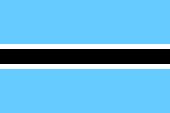
National flag,
ratio = 2:3,
Source, by:
Corel Draw 4





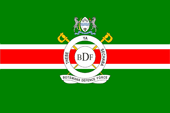
Flag of the army
ratio = 2:3,
Source, by:
Flags of the World



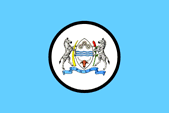
Flag of the President
ratio = 2:3,
Source, by:
Wikipedia (NL)





1884–1966,
Flag of the United Kingdom,
Source, by: World Statesmen





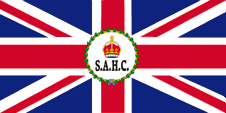
1907–1931,
Flag of the High Commissioner,
Source, by:
Flags of the World



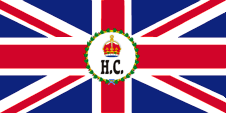
1931–1966,
Flag of the High Commissioner,
Source, by:
Flags of the World




Today's flag was introduced on the 25th of January, 1966 (other sources mention the 30th of September, 1966), It was created by George Winstanley, and goes back to the flag of the Botswana Democratic Party (three horizontal stripes in white, red and black). Altogether it shows five horizontal stripes, three stripes in pale blue, black and pale blue, each separated by a narrow white stripe, in the ratio 9:1:4:1:9. The pale blue stands for the yearning of the land for water and symbolizes even the blue skies above the land. Black stands for the majority of the people, white for the white minority. This way the flag expresses the wish for a peaceful coexistence between the black majority and the white minority.
Source: Flaggen Wappen Hymnen,
Flaggen und Wappen der Welt
In the times of the British protectorate Bechuanaland had no own flag. It was administrated by a British High Commissioner in South Africa, and it was used the British Union Jack. The British High Commissioner had his own flag since 1907. It was the for the High Commissioners usual flag, the British Union Jack with the badge of the High Commissioner in the middle, an abbreviation with the British Crown above, surrounded by a garland. Until 1931 the British High Commissioner in and for South Africa (abbreviation: S.A.H.C.) was responsible for Bechuanaland, which was administered from Mafeking in South Africa. After the Statute of Westminster South Africa in 1931 became independent, and the High Commissioner was responsible only for Bechuanaland, Basutoland and Swaziland (abbreviation H.C).
Source: Flags of the World


Coat of arms of Botswana,
Source, by:
Corel Draw 4

The coat of arms of Botswana was also introduced on the 25th of January, 1966 (30th of September, 1966). It shows on a white African shield three blue wave lines in the centre, with sprockets above, symbolizing industry, and a bull head below, symbolizing agriculture. The wave lines represent water, and refer, as the inscription "Pula" (rain), to the great importance of water. Shield holders are zebras. The colors black and white symbolize even with this both races, which live in the land. To the left and right of the scutcheon also stand one elephant tusk and a sorghum plant respectively.
Source:
Flaggen Wappen Hymnen,
Flaggen und Wappen der Welt

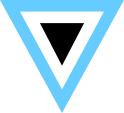
Aircraft Roundel,
Source, by: Wikipedia (EN)

Location:
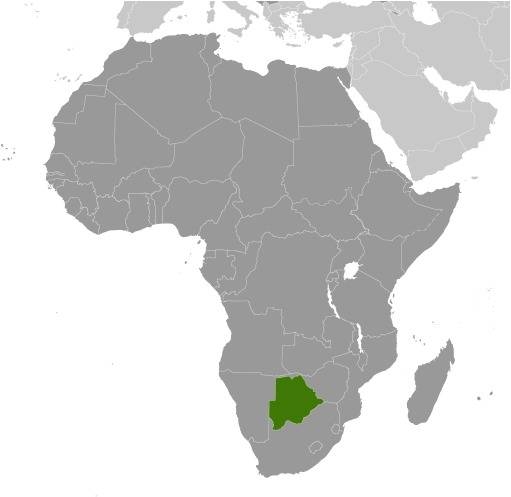
Source: CIA World Factbook
Map of the country:
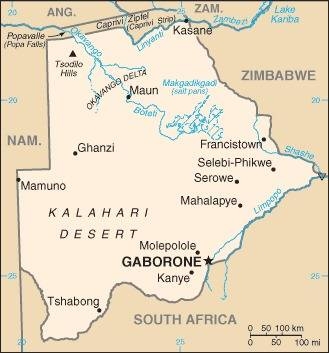
Source: CIA World Factbook

Area: 224.606 square miles
Inhabitants: 2.249.100 (2018), 75% Tswana (Betshuanes), 12% Shona, 6% Bushmen (San and Khoikhoi), 2% Europeans
Religions: 49% Animist, 29% Protestant, 9% Catholic, 12% other Christian
Density of Population: 10 inh./sq.mi.
Capital: Gaborone, 231.600 inh. (2011)
official Languagen: Tswana (Seswana), English
Currency: 1 Pula (BWP, P) = 100 Thebe
Time Zone: GMT + 2 h
Source:
Wikipedia (D)

16th/17th cent. · Tswana begin to settle
1820 · beginning British colonization
1889 · British administration
1895 · British protectorate
30th of September 1966 · independence from United Kingdom
1985–1986 · quarrels with South Africa
Source: Atlas zur Geschichte,
Wikipedia (D)

The name of the country comes from the name of the Tswana people, which is 75% of the population.
Source: Wikipedia (D)


![]()

























